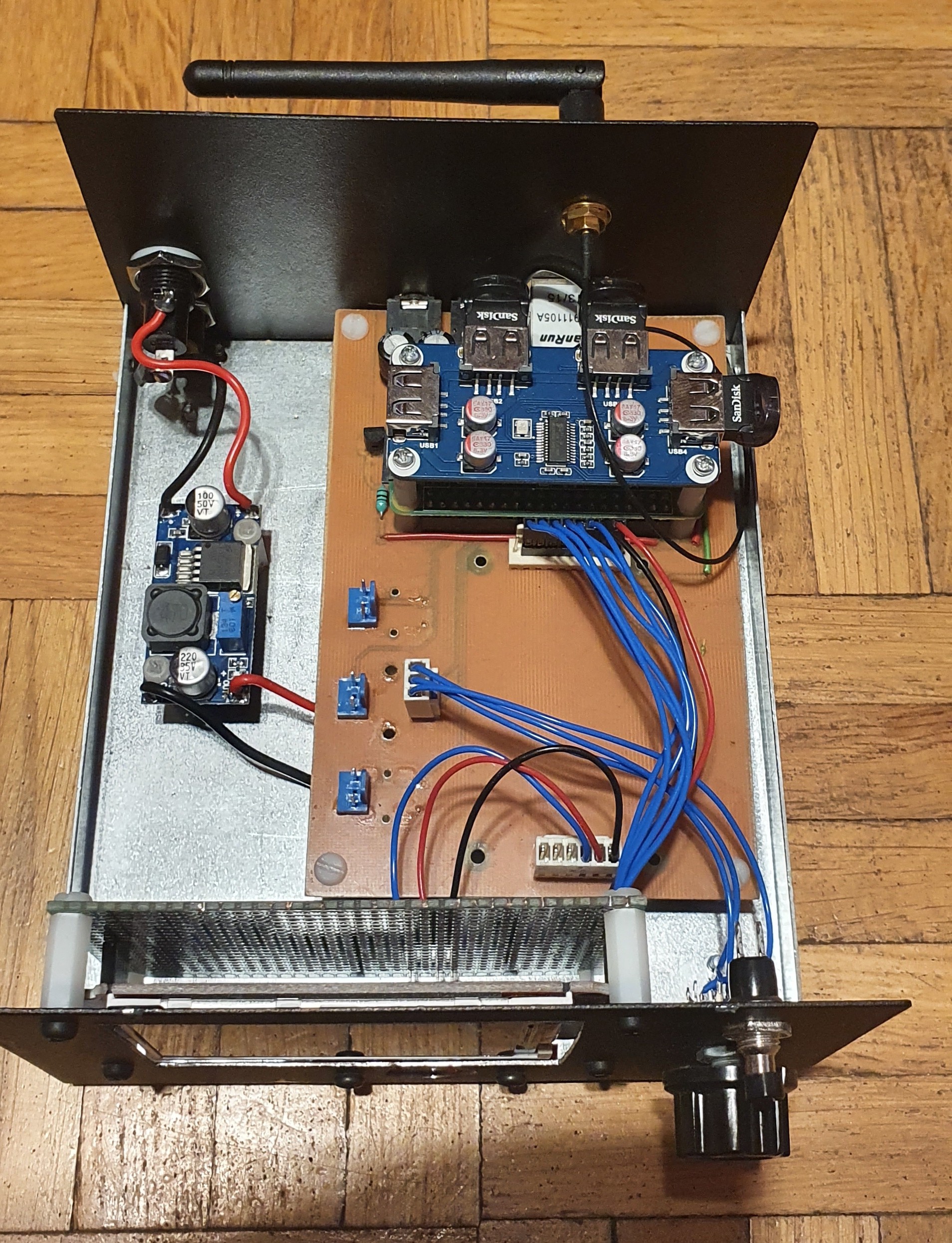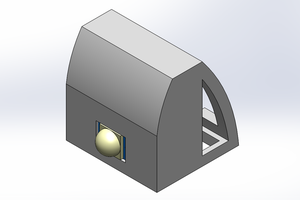First version of the device was build on breadbord, with common modules. I just wanted to check if everything works and if there are any issues with drivers, before proceeding to designing and building actual PCB fot that project.
eMPeDocles consists of single motherboard with power circuit, some peripherals (WM8731, ENC28J60), rotary encoder, buttons, IR receiver and of course sockets for Raspberry Pi Zero and LCD display. I designed first version of the device before introduction of Raspberry Pi Zero, so ENC chip was required to provide Internet connection. It is only 10 Mbps but it is enough for playing audio streams from the Internet, Some time ago I switched RPi for newer "W" model, so now it also has a WiFi connection, which ironically is even faster than original wired connection.
My original plan included making custom enclosure for the device - either 3D printed o laser cut from plywood. Unfortunately I got stuck on that part and eMPeDocles spent several years inside box with unfinished projects, waiting for batter days. Only occasionally I turned it on to update the system and drivers or add some minor piece of code. That changed some day when I came around nic metal enclosure. Idea of making custom case had been scrapped, instead I began working on fitting eMPeDocles PCB inside factory made case. Rotary encoder, buttons and IR receiver had been moved to front panel. I also decided to use larger LCD display.

Unfortunately as you can see I made a mistake and as a result of it cutting for screen is a little bit bigger than it suppose to be. But is is nothing that couldn't be fixed with nice laser cut masking frame. :)
Of course using metal case meant that Raspberry Pi PCB antenna wasn't able to work properly anymore and I needed to modify it by adding external antenna.

New case also opened new possibilities, by providing space for some upgrades. I installed switching regulator, that made the device less picky regarding power - original design required regulated 5V and was vulnerable for over-voltage damage.
I also bought Raspberry Pi Zero form factor USB hub, that allowed me to connect up to four USB flash drives, greatly increasing amount of internal storage. Until that moment eMPeDocles relied on external NAS storage as a device to store media files. Now they are stored internally. This also allowed me to add some additional functionality, like scripts periodically archiving new episodes of my favorite podcasts.

 Marek Więcek
Marek Więcek
 Idrees Hassan
Idrees Hassan
 Kirschner Christoph
Kirschner Christoph
 Craig Hissett
Craig Hissett
 Ben Lim
Ben Lim